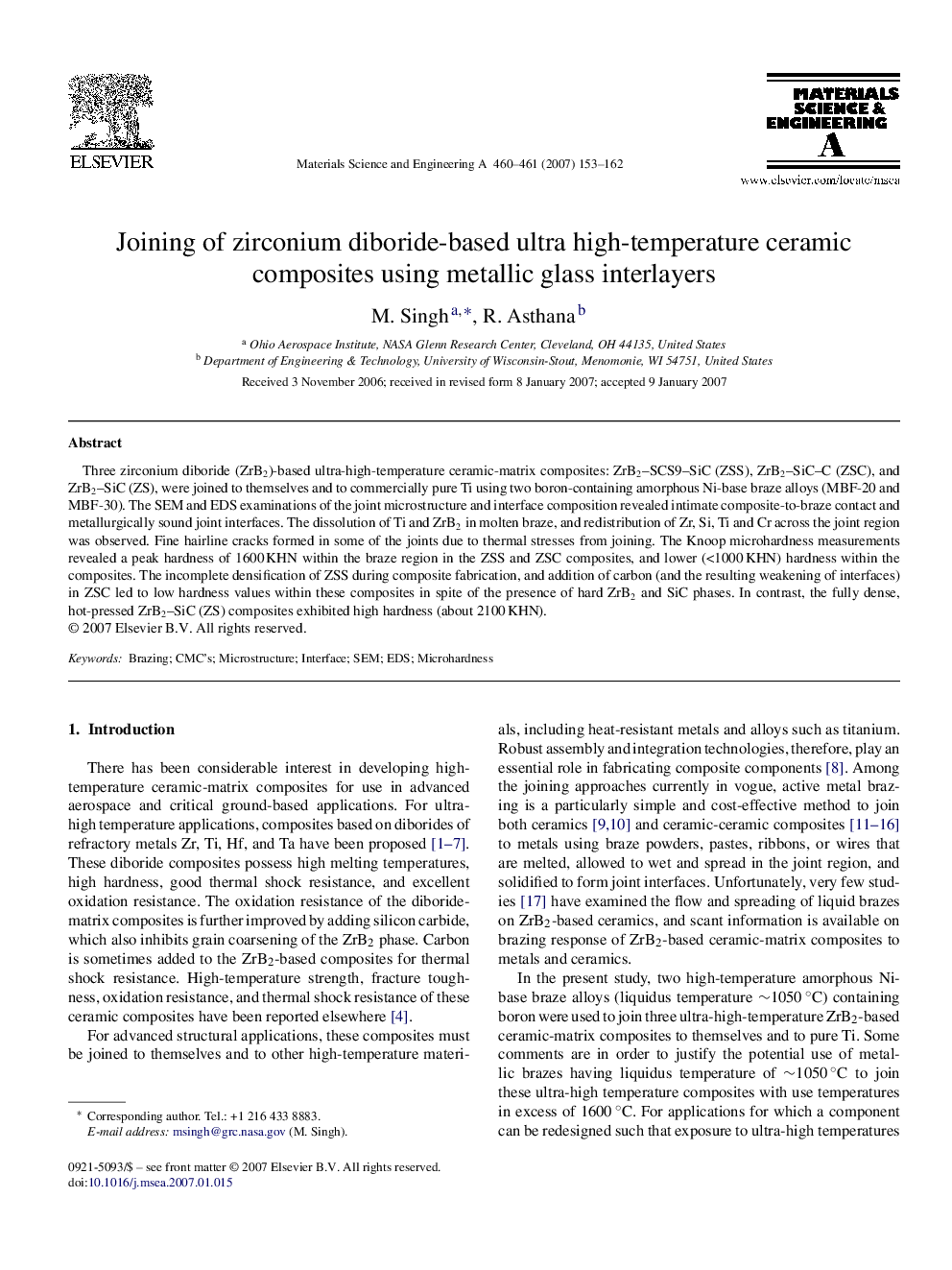| Article ID | Journal | Published Year | Pages | File Type |
|---|---|---|---|---|
| 1583558 | Materials Science and Engineering: A | 2007 | 10 Pages |
Three zirconium diboride (ZrB2)-based ultra-high-temperature ceramic-matrix composites: ZrB2–SCS9–SiC (ZSS), ZrB2–SiC–C (ZSC), and ZrB2–SiC (ZS), were joined to themselves and to commercially pure Ti using two boron-containing amorphous Ni-base braze alloys (MBF-20 and MBF-30). The SEM and EDS examinations of the joint microstructure and interface composition revealed intimate composite-to-braze contact and metallurgically sound joint interfaces. The dissolution of Ti and ZrB2 in molten braze, and redistribution of Zr, Si, Ti and Cr across the joint region was observed. Fine hairline cracks formed in some of the joints due to thermal stresses from joining. The Knoop microhardness measurements revealed a peak hardness of 1600 KHN within the braze region in the ZSS and ZSC composites, and lower (<1000 KHN) hardness within the composites. The incomplete densification of ZSS during composite fabrication, and addition of carbon (and the resulting weakening of interfaces) in ZSC led to low hardness values within these composites in spite of the presence of hard ZrB2 and SiC phases. In contrast, the fully dense, hot-pressed ZrB2–SiC (ZS) composites exhibited high hardness (about 2100 KHN).
